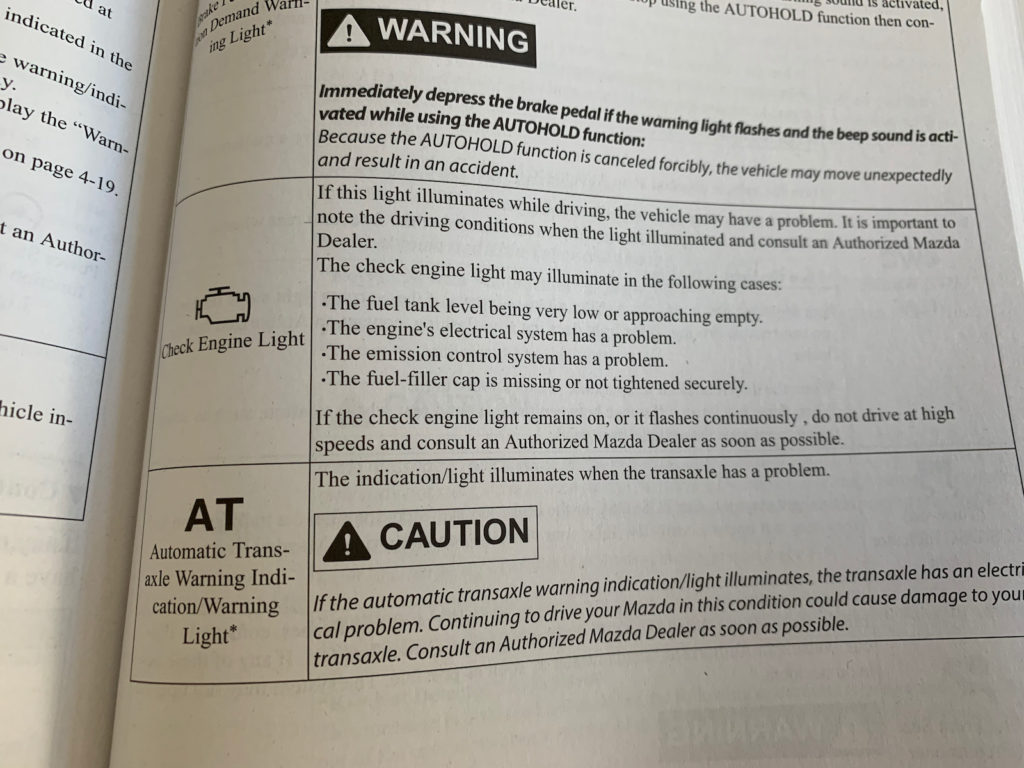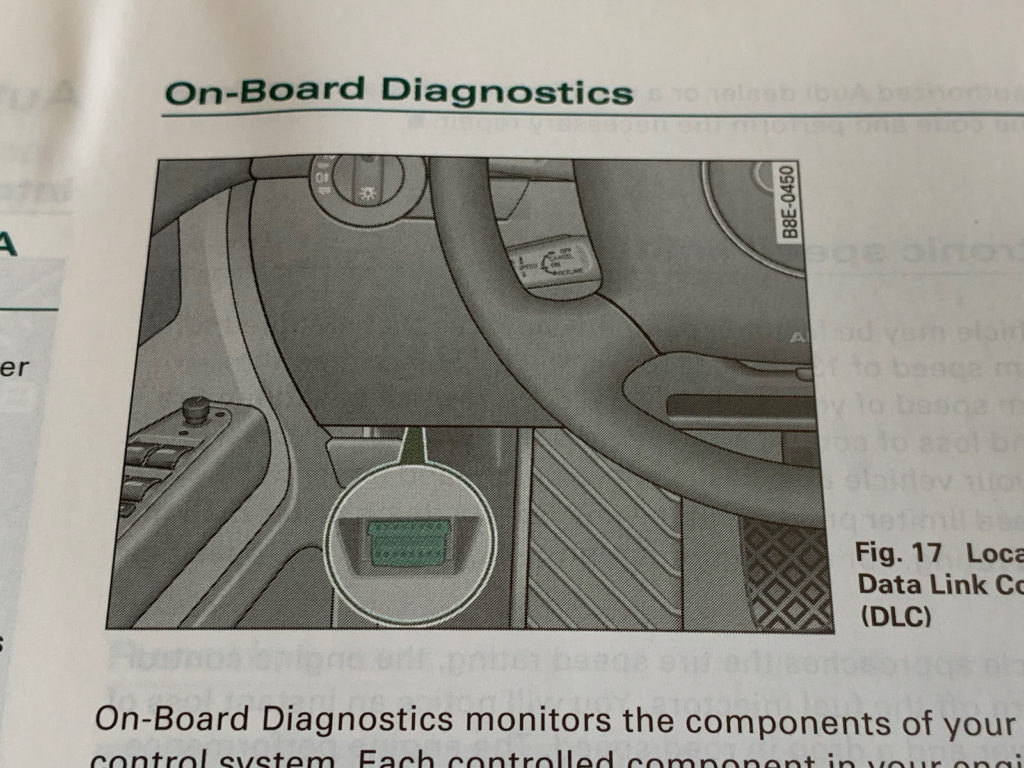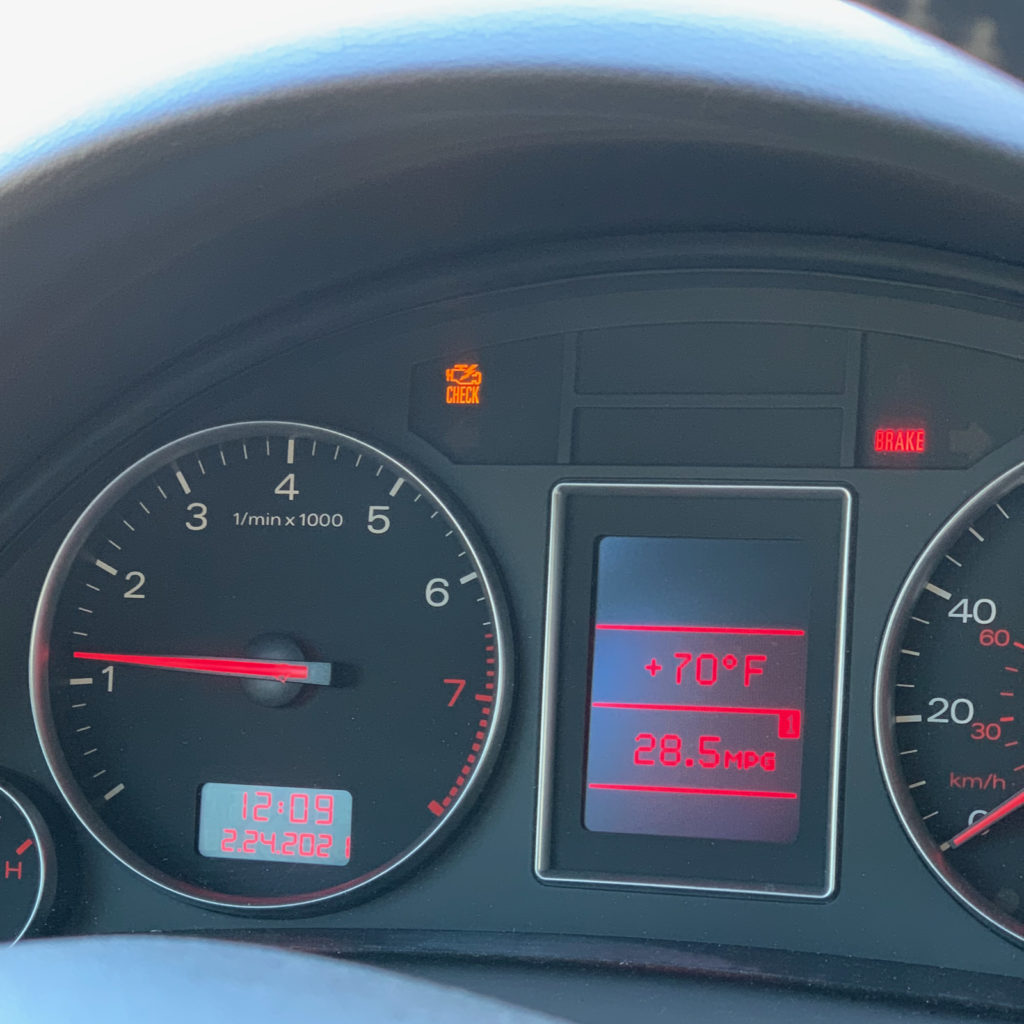Most of us have been there before. There you are driving your longtime trusty vehicle down the road and the dreaded check engine warning light or malfunction indicator lamp (MIL) illuminates sending a syncing feeling down your spine. Great, now what should I do? The typical reaction is to make an immediate appointment with a local repair shop / mechanic. But did you know that not all check engine lights are equal? Let’s dig into a couple owners manuals and see what information we can glean.
Step 1 – Check your vehicle owners manual

This may seem like a no brainer, but you’d be surprised how many people don’t take this step. Typically the manufacturer will have a detailed explanation of the various types of check engine lights displayed and their meaning. Look under “Warning Lights” in your index to quickly find the page you need. Here’s where you can get an idea of some of the types of reasons a check engine light is on. For example, in this owners manual from a Mazda vehicle some of the possibilities are:
- Low fuel
- An electrical system problem
- Emission control problem
- Fuel Filler Cap wasn’t tightened correctly
So if you can go thru the list you may get some insight into what caused the light. Did you just fill up at a gas station? Check your fuel cap. Is your vehicle on empty? Head to a gas station. Did the car start running rough? Could be a problem with the emission system.
Step 2 – Know the warnings
In the same manual referenced above, a note is made about conditions that require more urgent attention. ” If the check engine light remains on, or it flashes continually, do not drive at high speeds and contact a dealer as soon as possible.” So here is where a call or visit to Wise Auto Tech is highly recommended. If you have already gone down the list in your manual and it’s none of the other easy fix issues, it is important to get your vehicle into a repair show ASAP to avoid damage to your vehicle. Another vehicle manual from Audi states that the catalytic converter could be damaged if the lights are flashing and urges that you drive with reduced power avoiding high sustained speeds and/or rapid accelerations.
Step 3 – Consider Purchasing an OBD tool

OBD or On-Board Diagnostics is the system that monitors you engines emission system. Sensors are placed at critical points throughout the system so that a certain code will tell the mechanic where the issue is. These codes can easily be retrieved with a generic scan tool for OBD. They use the data link connector port typically located on the drivers side of the vehicle under the steering column. This information can arm you with the information necessary to know what might have caused the issue and what a quick search on Google or Youtube can help more with the possible fix. If you have an aging vehicle it might not be a bad idea to have a scanner easily accessible so that you have more information before you bring your vehicle with check engine light in for service.
Hopefully with these simple steps you have the power and knowledge to know a little more the next time you are confronted with the dreaded check engine light! If you do need to have the professionals at Wise Auto Tech take a look at your vehicle please contact us here.
Wise Auto Tech
2323 San Pablo Ave, Berkeley, CA 94702
(510) 665-1060


